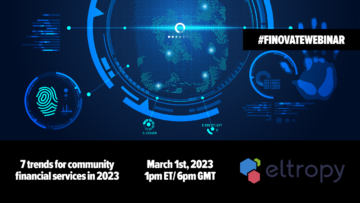
To celebrate the start of Native American Heritage month, we wanted to highlight the current landscape of the Native American fintech scene. There’s one problem– while the culture of Native Americans in the U.S. is vibrant and alive at the moment, tools to serve this group’s unique financial needs are not.
There are, however, a handful of organizations to highlight in this space.
Totem
Totem is currently the only fintech aimed at specifically serving indigenous people. The startup was founded in 2022 as a digital bank to serve Native Americans. The app not only offers direct deposit and a debit card, but also serves as a place where users can search information on tribal benefits and programs.
Native American Venture Fund
The Native American Venture Fund is a platform that offers impact investment opportunities to investors looking to support indigenous communities. The firm’s goal is “to leverage a tribe’s economic and legal advantages to develop and operate successful business enterprises and provide job opportunities for tribal members and the local community workforce.”
KeyBank’s Tribal-Specific Banking
KeyBank is very intentional in the way it serves its Native American clients. The Ohio-headquartered bank has a specific team to offer credit, treasury management, capital markets, investment management and public finance products to tribal nations.
First Nations Financial Management Board
While not in the U.S., Canada-based First Nations Financial Management Board allows indigenous people to be eligible to borrow at similar rates and terms as other governments in Canada. It also allows tribes to use different revenue streams like taxation, government transfers, and economic development as security for borrowing under the FMA.
Banks and Credit Unions
In addition to these financial services organizations, there are a small handful of banks and credit unions serving First Nations communities. Earlier this year, NerdWallet published a blog post listing 30 U.S.-based financial institutions.
Why the lack of tools and services?
This list needs some work. There are currently 574 Native American tribes and Native Alaskan villages that are spread out across cities and the 326 federally recognized Indian reservations. Most Native Americans have severely limited access to traditional financial services and rely on clunky websites and paper-based processes to receive and maintain benefits. As an example, I own a home that I rent out to a Native American family. Eight family members live in the home, and they pay their rent each month using four separate U.S. Postal Service money orders.
There are two main drivers behind the lack of credit opportunities, resources, and education for Native Americans. First, most Native Americans and tribal units are not wealthy. If a fintech wanted to serve this group’s particular needs, it may be difficult to monetize and scale. Second, each tribe has its own unique culture and many tribes also have their own constitution. What’s more, different tribal members receive unique sets of financial benefits and resources, which can be difficult to track and manage without the proper tools. Building one solution to fit all tribes’ needs would be a challenge. Can fintech do better?
- SEO Powered Content & PR Distribution. Get Amplified Today.
- PlatoData.Network Vertical Generative Ai. Empower Yourself. Access Here.
- PlatoAiStream. Web3 Intelligence. Knowledge Amplified. Access Here.
- PlatoESG. Carbon, CleanTech, Energy, Environment, Solar, Waste Management. Access Here.
- PlatoHealth. Biotech and Clinical Trials Intelligence. Access Here.
- Source: https://finovate.com/an-overview-of-the-native-american-fintech-scene/
- :has
- :is
- :not
- :where
- 1
- 2022
- 30
- a
- access
- across
- addition
- advantages
- aimed
- alive
- All
- allows
- also
- American
- Americans
- an
- and
- app
- ARE
- AS
- At
- Bank
- Banks
- BE
- behind
- benefits
- Better
- Blog
- borrow
- Borrowing
- Building
- business
- but
- by
- CAN
- Canada
- capital
- Capital Markets
- card
- celebrate
- challenge
- Cities
- clients
- Communities
- community
- Constitution
- credit
- Credit Unions
- Culture
- Current
- Currently
- Debit
- Debit Card
- deposit
- develop
- Development
- different
- difficult
- digital
- digital bank
- direct
- do
- drivers
- each
- Earlier
- Economic
- Economic Development
- Education
- eight
- eligible
- enterprises
- example
- family
- family members
- federally
- finance
- financial
- Financial institutions
- financial management
- financial services
- Finovate
- fintech
- First
- fit
- For
- Founded
- four
- goal
- Government
- Governments
- Group’s
- handful
- Have
- heritage
- Highlight
- Home
- However
- HTML
- HTTPS
- i
- if
- Impact
- in
- Indian
- information
- institutions
- Intentional
- investment
- investment opportunities
- Investors
- IT
- ITS
- Job
- Job Opportunities
- jpg
- Key
- Lack
- landscape
- Legal
- Leverage
- like
- Limited
- limited access
- List
- listing
- live
- local
- looking
- Main
- maintain
- manage
- management
- many
- Markets
- max-width
- May..
- Members
- moment
- monetize
- money
- Month
- more
- most
- Nations
- native
- needs
- of
- offer
- Offers
- on
- ONE
- only
- operate
- opportunities
- orders
- organizations
- Other
- out
- overview
- own
- paper-based
- particular
- Pay
- People
- Place
- platform
- plato
- Plato Data Intelligence
- PlatoData
- Post
- postal
- processes
- Products
- Programs
- proper
- provide
- public
- Rates
- receive
- recognized
- rely
- Rent
- Resources
- revenue
- s
- Scale
- scene
- Search
- Second
- security
- separate
- serve
- serves
- service
- Services
- serving
- Sets
- severely
- similar
- small
- solution
- some
- Space
- specifically
- spread
- start
- startup
- stock
- streams
- successful
- support
- Taxation
- terms
- that
- The
- their
- There.
- These
- they
- this
- this year
- to
- tools
- track
- traditional
- transfers
- treasury
- Tribal
- Tribe
- tribes
- two
- u.s.
- under
- Unions
- unique
- units
- use
- users
- using
- venture
- very
- vibrant
- wanted
- was
- Way..
- we
- wealthy
- websites
- which
- while
- without
- Work
- Workforce
- would
- year
- zephyrnet











